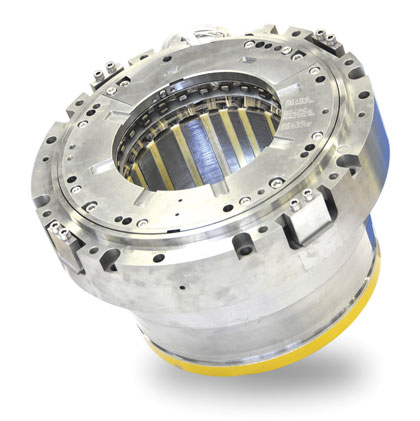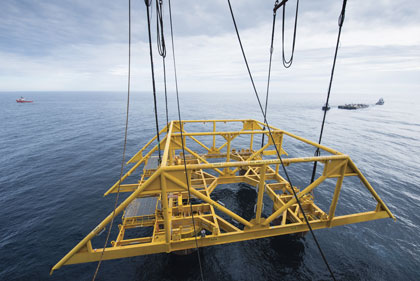SKF has supplied magnetic bearings for use in the world’s first subsea gas compression system at the Asgard gas field off the Norwegian coast. As part of the subsea gas compression system, the bearings will contribute to recovering additional gas volumes from depleting gas fields, as well as extending the lifetime of those gas fields that would otherwise be prematurely closed.
A KEY PART TO MAXIMIZING GAS RECOVERY
Traditionally, gas compression is made on platforms. For Asgard, Statoil and its partners made the decision to locate it on the seabed, near the wellheads, to maximize gas recovery and, therefore, significantly prolong the production lifetime of this gas field.
SKF’s magnetic bearing technology was a key enabler to achieve this autonomous deep water subsea gas compression system. The bearing simplifies the system architecture by removing the need for components, such as lubricating oil, seals, and gearbox. The magnetic bearings are integrated inside the compressor casing, preventing gas leakage, and allowing a smaller environmental footprint. Furthermore, the magnetic bearings are frictionless, enabling higher rotation speeds, leading to smaller compressor modules and ultimately a lighter processing plant infrastructure.

SKF magnetic bearings equip the first-ever subsea gas compression system at the Statoil-operated Åsgard gas field near the Norwegian coast.
HIGH REWARD FOR HARD WORK
“This is a great achievement after five years of intense development, qualification, and tests,” says Jérémy Lepelley, SKF magnetic mechatronics (S2M) subsea manager. “Compressing gas on a subsea installation is a significant step forward for the oil and gas sector. SKF magnetic bearings enable the gas compression system to be completely oil-free, exceptionally reliable.”
SKF was awarded the contract in May 2011 by MAN Diesel & Turbo, the OEM of the 11.5 MW electric motor-driven centrifugal compressor running on SKF’s magnetic bearings.
The mechanical modules were assembled in the compressor frames in 2013, following the validation of the technology by Statoil, and the two units have since then undergone “burn-in” time, accumulating more than 2,000 hours each, prior to installation subsea.

Featured Image: For the Asgard platform, Statoil and its partners decided to locate it on the seabed, near the wellheads, to maximize gas recovery (photo credit: Øyvind Hagen).
Above: The Asgard Subsea Compressor Manifold Station (photo credit: Øyvind Hagen).
A WELL-ROUNDED SOLUTION
In addition to supplying the magnetic bearings, SKF has also provided a control system which enables remote operation of the magnetic bearing system. This facilitates the effective and efficient use of the magnetic bearings, from initial commissioning to safe daily operation and maintenance planning.
The magnetic bearings have been tested and qualified in wet gas conditions similar to those found in the North Sea, ensuring the bearings deliver the same high performance in subsea applications as they do in theory.
In addition, the magnetic bearing control system has been tailored for use in harsh marine environments. This has been achieved through a special redundancy design in which components are assembled in an enclosure that can withstand subsea conditions. ◆
For More Information:
SKF is a leading global supplier of bearings, seals, mechatronics, lubrication systems, and services, which include technical support, maintenance and reliability services, engineering consulting, and training. SKF is represented in more than 130 countries and has around 15,000 distributor locations worldwide. For more information, visit www.skf.com.
____________________________________________
MODERN PUMPING TODAY, January 2016
Did you enjoy this article?
Subscribe to the FREE Digital Edition of Modern Pumping Today Magazine!
![]()


